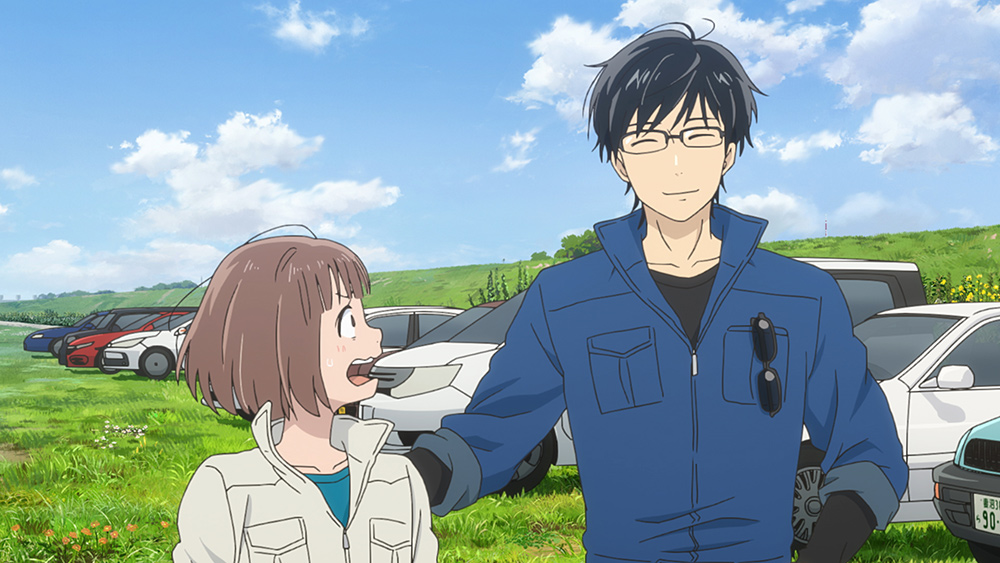![``Blue Thermal'' Director Masaki Tachibana Anime is about ``drawing everything''. That's why we're obsessed with reality [Director's Interview Vol.189]](https://cinemore.jp/images/6fc7a7f10df1fb7fce749f0afae694a96a162fa37b3aac6efda7a453065b8e1d.jpg)
293,160,271,401,73
``Blue Thermal'' Director Masaki Tachibana Anime is about ``drawing everything''. That's why we're obsessed with reality [Director's Interview Vol.189]
``Blue Thermal -Aonagi University Athletic Association Aviation Club-' ' (author: Kana Ozawa), a youth sports manga about airplanes and gliders that fly through the sky on updrafts, has been published in `` Tokyo Magnitude 8.0 '' (2009) and `` Barakamo ''. It was made into an animated film by director Masaki Tachibana, who is known for his works such as ' The Princess Principal ' (2014) and ' Princess Principal' (2017-).
This work depicts, with dynamic images, the drama of the efforts and conflicts of young people who spend their youth in the sky, centering around Tamaki Tsuru, a new member of the university's aviation club. How did director Tachibana tackle the original work, which has a reputation for its realistic depictions, as the original author Mr. Ozawa himself was a former member of the aviation club? We take a closer look at his many obsessions through his own film journey.
Index
- A commitment to the reality of fixing and “putting away” yourself
- A film history that has accompanied Spielberg's works
- Mixing lies into daily activities to make people believe
- Sky colors and cloud shapes create a sense of authenticity
- Profile each character
A commitment to the reality of fixing and “putting away” yourself
Q: In the opening scene, where the shadow of a tree falls on the car body, I felt an extraordinary amount of dedication to the depiction of the scenery and background. Director Tachibana's realistic and detailed depiction of landscapes and backgrounds has been impressive since his directorial debut "Tokyo Magnitude 8.0" (2009). Please tell us what you are particular about.
Tachibana: In this case, there are many places that actually exist, such as the Menuma gliding field, but by portraying places that everyone knows with a sense of reality, it has the effect of creating a sense of familiarity as an introduction. there is. The premise was to "draw something properly." After that, I have to draw it in a way that makes it look like a picture, so there are some things that I have to add a little flavor to, but I'm trying to get people to think, ``Scenes like this actually exist in real life, right?''
Q: Is this a methodology developed through your own directing experience?
Tachibana: That's right. Our generation watches a lot of Hayao Miyazaki's movies, and may have naturally gravitated toward an approach that emphasizes the reality on screen, even in fantasy. Even now, when I watch anime on TV, I find myself thinking things like, ``The width of the road isn't like this,'' ``The height of the fence is strange,'' or ``The perspective doesn't look right even though I'm inside the room.'' There are times when I feel like a character, and I'm someone who's always been moved by things that give a sense of reality, so I want to aim for that from the screen.
When it comes to directing, I'm an irregular type of director, and I'm the type of person who corrects the images drawn by the animators myself (rather than giving written instructions for retakes). I draw a picture of what I want to add to this area.

“Blue Thermal” © 2022 “Blue Thermal” Production Committee
Q: In an interview for Ghost in the Shell: SAC (02-03), you talked about redrawing it.
Tachibana: When I watched the making of Kiki's Delivery Service (1989) as a child, Mr. Miyazaki scolded the animators, saying, ``This doesn't convey anything,'' and ``What are you looking at?'' and then made the corrections himself. I was drawing. At that time, I didn't know anything about the anime industry, so I had the misconception that directors draw their own work, but in reality, there are very few people like that (lol). It wasn't until I entered the industry that I realized that Mr. Miyazaki was drawing his own work because he was an animator.
Animators take pride in their work, so it's natural that there are people who say, ``The director is fixing the picture.'' That's why if you don't present something as persuasive as the animators, you end up getting scolded or told that you can't draw like this. In order to properly convey what I wanted to convey, I worked hard to draw after entering the industry.
It's difficult, but if I can't draw, I feel like I'll have to compromise somewhere. I think you can either make a compromise or go through the trouble of drawing it yourself, and I chose the latter. For example, I corrected the layout of the curve on the road to Nagasaki Airport in the opening scene, but the layout director made further changes after that (lol). However, I think that the persuasive power of the screen was created because of everyone's efforts.

